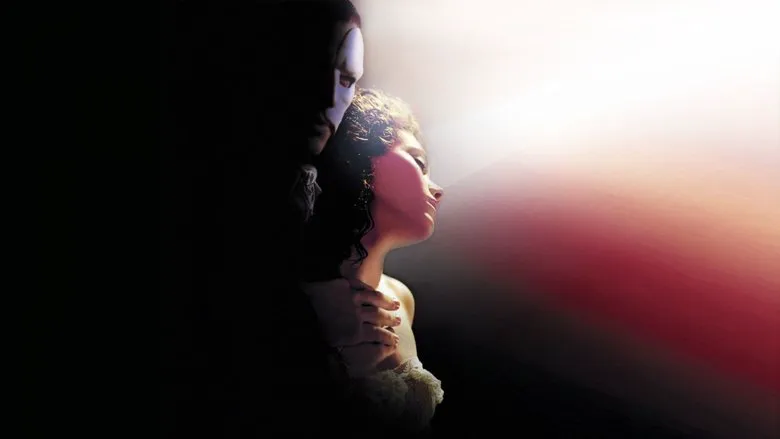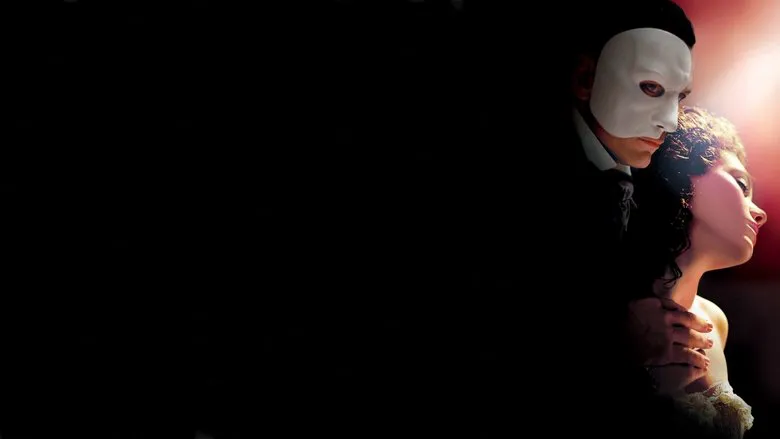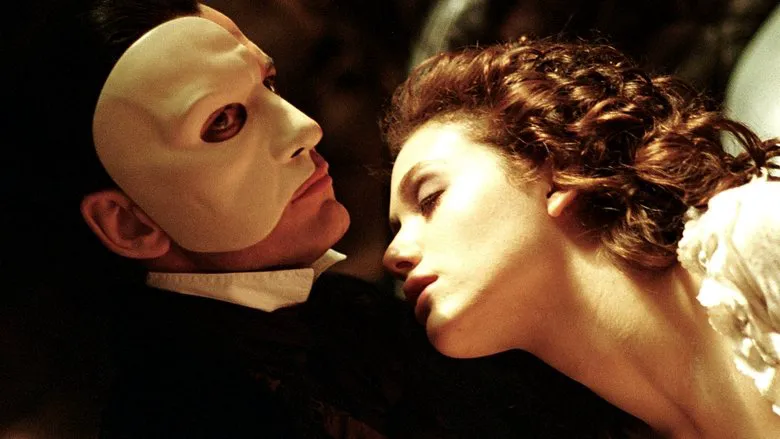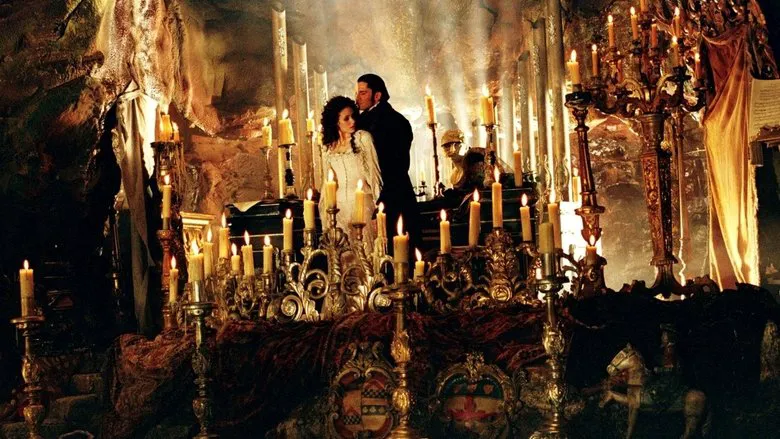The Phantom of the Opera: A Spectacle of Sound and Fury?
Okay, folks, let’s get one thing straight: this is opera. Not a ghost story, not a musical in the modern sense. They’re singing all the time – if not full-blown arias, then recitative. Think of it like a historical drama where characters communicate through song. This is crucial to understand before diving into Joel Schumacher’s “The Phantom of the Opera,” or the constant singing might overshadow the visual splendor. And let’s be honest, Schumacher’s touch is most evident in the visuals, because even in Gaston Leroux’s original novel, the phantom was a bit of a mishmash – part gothic horror, part melodrama, part detective story, and part sensational tabloid fodder. Add to that countless adaptations and a Broadway run, and you’ve got a real melting pot.

The film opens with a freeze-frame of an old black-and-white street photograph. A zoom-in, and suddenly the street comes to life. A tracking shot, and you’re transported to that era. We enter a dilapidated, abandoned building – once an opera house – for an auction of its artifacts. A fallen chandelier lies on the shattered floor. As it’s sold, a magical whirlwind erupts, a surge of sound, and the dilapidated surroundings are transformed. Crimson velvet with gold tassels, opulent armchairs, bright light – the first two minutes are undeniably beautiful and cleverly conceived. There are a few more moments like this throughout the film – transformations of space and a staged hanging. Schumacher clearly aimed to create something visually inventive. But when you get to the core of what he was trying to invent around… well, that’s where things get dicey.

Timey-Wimey Nonsense
Right off the bat, there’s a chronological inconsistency: the auction takes place in 1919, while the main action is set in 1870. Yet, Miranda Richardson, made up to look ancient at the auction, is supposed to be in her late 40s during the main storyline. The math just doesn’t add up. Perhaps this is a deliberate signal that the entire film is a stylized fantasy, divorced from reality. This applies to everything: the plot, the psychology, the characters’ faces and voices, the visuals, and even the sound design.
A Cacophony of Voices
Imagine if someone, heaven forbid, actually spoke in a normal voice! They’d be speaking Russian, while all the arias are sung in English with subtitles. But then, recitatives like “Why aren’t you si-i-inging?” are back in Russian. It’s a bizarre mix. The three leads – Christine (Emmy Rossum), the Phantom (Gerard Butler), and the Viscount (Patrick Wilson) – all strain their voices, while the prima donna Carlotta (Minnie Driver) is dubbed by an Italian singer in the original version. And ironically, Minnie Driver’s dubbed voice isn’t necessarily worse than Emmy Rossum’s own, even though the plot hinges on that very point. The Phantom wants to make Christine the prima donna, presumably so she’ll fall in love with him out of gratitude, because Carlotta, apparently, offends his refined sensibilities.

A Musical Monotony
Honestly, it’s hard to hear what the Phantom is complaining about. If anything, Emmy Rossum’s thin, girlish voice, despite being well-trained, is more grating with its saccharine sweetness and calculated attempts to elicit sympathy. But there’s nothing to sympathize with for a full two hours. Perhaps it’s the music itself. Andrew Lloyd Webber’s score boils down to one famous leitmotif – undeniably catchy, but played in every key imaginable until you’re only willing to hear it for a hefty price. The rest is monotonous and indistinct. And to top it off, every aria and duet is sung to its drawn-out conclusion, illustrating the action instead of being the action. The lyrics are even more diluted. They drag out every rhyme, complete with operatic facial expressions and gestures – wide eyes, outstretched arms. You’re stuck there, unable to even doze off because it’s so loud…

Broadway Disappointment
We’ve all heard the hype: a blockbuster musical with record-breaking earnings worldwide. Schumacher offers another valuable warning: if you’re on Broadway, don’t waste your hard-earned money on this kind of spectacle. It’s not worth the Phantom’s ridiculous makeup, when this chubby guy with a remarkably unpleasant voice finally removes his mask. Nor is it worth the idiotic dances at the costume balls, which look like modern Broadway, not 1870, and certainly not 1770, the era they’re supposedly costumed for. The theatrical dungeons and the crypt-like winter scenery are all clearly computer-generated. And there’s no point in retelling the plot about the Phantom’s insane jealousy of the noble Viscount – the endless opera drowns it all out. All potential fears, sympathies, and connections are suffocated.
This begs the question: what is Schumacher using all this artifice to achieve? What is there in his film that justifies all the artificiality? Time is wasted, the sense of immersion is non-existent, boredom reigns supreme, and unless you sing opera in the shower every morning, you’ll be left wondering why you were subjected to this.